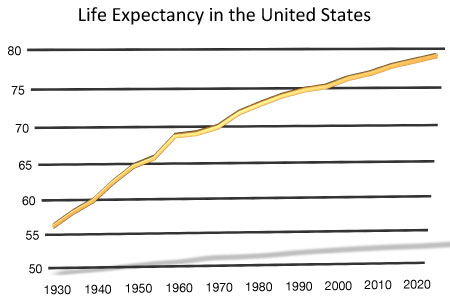Research and You

Research improves our lives
The products of federally-funded scientific research surround us. From the way we communicate and conduct business to the technologies that improve the safety of American soldiers; from the development of new and renewable sources of energy to the science that studies the condition of the Earth and explores life beyond our planet, research supported by the federal government informs our thinking and improves our lives. Among the best examples of the benefits of federally funded research, and of why continued robust funding is so important, are the advances in health that have resulted from this research.
Biomedical research supported by the federal government – through the National Institutes of Health (NIH), as well as agencies such as the National Science Foundation (NSF), Department of Energy, and  Department of Defense – has had a profound effect on the health and well-being of Americans and people all over the world. Americans are living longer – 30 years longer than in 1900 – and experiencing a better quality of life. The proportion of older people with chronic disabilities has dropped by nearly one-third over the past 25 years. U.S. cancer deaths are falling by about 1 percent each year, with each 1 percent decline saving the nation some $500 billion. The five-year survival rate for the most common type of childhood cancer is now 90 percent. U.S. death rates from heart disease and stroke have fallen more than 60 percent in the last half-century. HIV-infected people in their 20s can today expect to live to age 70 and beyond, compared to only a few months when the disease first emerged. All of these advances are due in good part to federally funded research.
Department of Defense – has had a profound effect on the health and well-being of Americans and people all over the world. Americans are living longer – 30 years longer than in 1900 – and experiencing a better quality of life. The proportion of older people with chronic disabilities has dropped by nearly one-third over the past 25 years. U.S. cancer deaths are falling by about 1 percent each year, with each 1 percent decline saving the nation some $500 billion. The five-year survival rate for the most common type of childhood cancer is now 90 percent. U.S. death rates from heart disease and stroke have fallen more than 60 percent in the last half-century. HIV-infected people in their 20s can today expect to live to age 70 and beyond, compared to only a few months when the disease first emerged. All of these advances are due in good part to federally funded research.
Despite tremendous gains, serious disease challenges remain. These pose a serious threat not just to our physical health but to our economic health as well. Consider this: while the for NIH for FY 2012 is just under $31 billion, this year alone Alzheimer’s and other dementias will cost the U.S. economy over $180 billion. And, if no cures and therapies are found, these diseases are projected to cost the United States by 2050. Heart disease and diabetes cost the nation more than . Continued strong investment in biomedical research is essential if we hope to find effective treatments or cures for the nation’s most chronic and costliest diseases – Alzheimer’s, cancer, diabetes and heart disease, among them.
Funding cuts imposed by the sequester (on top of the budget caps already mandated by the Budget Control Act) would severely affect America’s ability to battle some of our most pressing health issues.
State Profiles
Learn about research activity in your state

